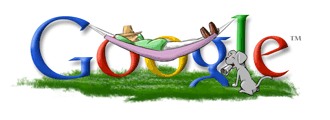Hagar and I went to see The Golden Compass, and we had a great disappointment. I was very excited about this movie after reading the book. We were also intrigued to see how the director would surpass the whole controversy regarding Philip Pullman’s attacks on religious institutions. I was prepared to understand some level of compromise from the writers and director in order to make the movie commercially successful, but it went too far…in my opinion.
Here are three points to explain my feelings:
First: During the first 5 -15 minutes of the movie the narrator gives away what a reader gets only after reading most of the book, which means that all the suspense and intrigue in the book are lost.
Second: The movie is so sweetened that a very important passage of the book—the death of a child whose dæmon has been cut away— is changed completely, getting rid of an element that makes the reader understand the real horror against which the main character, Lyra Belacqua, and her friends are fighting.
Third: Nicole Kidman…no way she is the best representation of the Mrs. Coulter in the book. I have liked her performances in the past, but this is not one of her best. The character in the book is beautiful and evil. Her portrayal is neither one nor the other.
In general the movie feels like a preview, not the real deal. The creators tried to condense a great story into 113 minutes, but unfortunately someone did not do a great job this time. I hope the upcoming second and third movies of the series are better.
I, personally, would recommend that you read the books before seeing the movies; otherwise you will miss a great story.
Here are three points to explain my feelings:
First: During the first 5 -15 minutes of the movie the narrator gives away what a reader gets only after reading most of the book, which means that all the suspense and intrigue in the book are lost.
Second: The movie is so sweetened that a very important passage of the book—the death of a child whose dæmon has been cut away— is changed completely, getting rid of an element that makes the reader understand the real horror against which the main character, Lyra Belacqua, and her friends are fighting.
Third: Nicole Kidman…no way she is the best representation of the Mrs. Coulter in the book. I have liked her performances in the past, but this is not one of her best. The character in the book is beautiful and evil. Her portrayal is neither one nor the other.
In general the movie feels like a preview, not the real deal. The creators tried to condense a great story into 113 minutes, but unfortunately someone did not do a great job this time. I hope the upcoming second and third movies of the series are better.
I, personally, would recommend that you read the books before seeing the movies; otherwise you will miss a great story.
Powered by ScribeFire.



 I just bought a drafting table. It does not seem like a big deal, but when you think of the many hours that designers spend working with a computer, a table to sit and sketch, just by hand, without a fancy Wacom tablet, or an Apple super mouse, just ideas flowing in a natural fashion...
I just bought a drafting table. It does not seem like a big deal, but when you think of the many hours that designers spend working with a computer, a table to sit and sketch, just by hand, without a fancy Wacom tablet, or an Apple super mouse, just ideas flowing in a natural fashion...
 Test your ability to kern (adjust the distance between two letters, to make words more readable) at
Test your ability to kern (adjust the distance between two letters, to make words more readable) at  1. Open your Swatches palette.
1. Open your Swatches palette.
